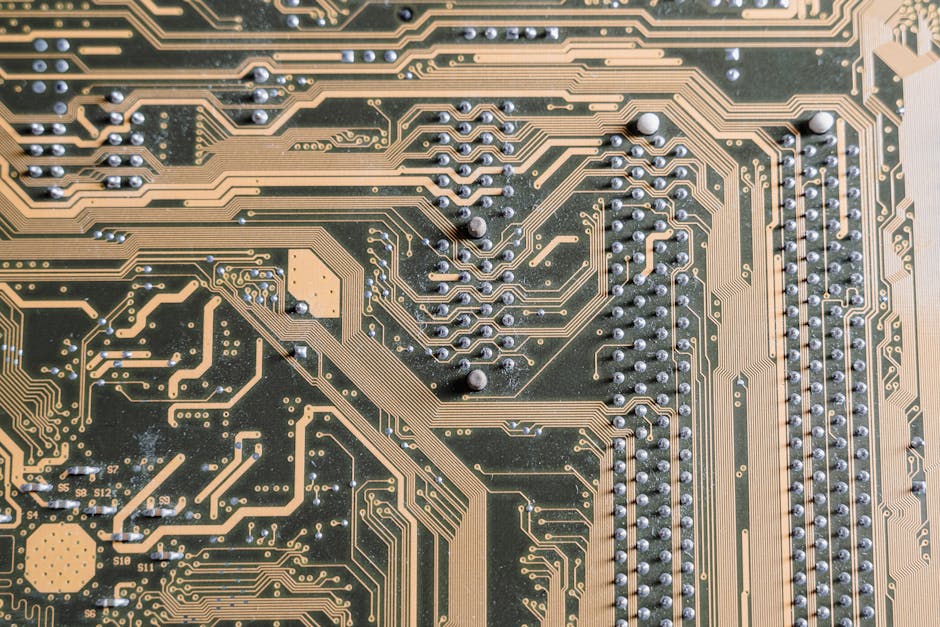Intel Core Ultra 200H im Test: Hohe Leistung und 16:30 h Laufzeit dank „Arrow Lake-H“ - Related to ultra, 200h, gaming, 16:30, qd-oled
Intel Core Ultra 200H im Test: Hohe Leistung und 16:30 h Laufzeit dank „Arrow Lake-H“

Nach der Vorstellung zur CES ist „Arrow Lake-H“ alias Intel Core Ultra 200H für Notebooks ab sofort offiziell verfügbar. Ein erster Test des Flaggschiffs Intel Core Ultra 9 285H im MSI Prestige 16 AI Evo im Vergleich zu Core Ultra 9 288V „Lunar Lake“ und AMD Strix Point 300 zeigt eine hohe Leistung bei sehr langer Akkulaufzeit.
Intel Core Ultra 200H „Arrow Lake-H“ umfasst die Mainstream-Versionen der neuen Intel-Chips fürs Notebook. Arrow Lake-H folgt als zweite Core-Ultra-200-Serie auf Core Ultra 200V „Lunar Lake (Test) und deckt ein höheres TDP-Einsatzgebiet für mehr Leistung in größeren Chassis ab. Für diesen ersten Test zum Marktstart stand ComputerBase das Topmodell Core Ultra 9 285H im MSI Prestige 16 AI Evo zur Verfügung.
Intel Core Ultra 9 285H „Arrow Lake-H“ Hohe Leistung in Anwendungen.
Hohe Effizienz im Teil- und Niedriglast-Betrieb.
Sehr lange Akkulaufzeiten möglich iGPU ohne Technologiefortschritt.
Im Groben zeichnet sich die Serie wie folgt aus:
Arrow Lake-H ist die erste Umsetzung von Arrow Lake im Notebook.
Arrow Lake-H nutzt wie Arrow Lake-S (Core Ultra 200S) im Desktop ein Chiplet-Design.
Der Compute-Tile mit 6 P- und 8 E-Cores aus TSMCs Fertigung entspricht dem aktuellen Stand „Arrow Lake“.
Er bietet aber nur 6P+8E- und nicht 8P+16E-Cores wie im Desktop.
Den SoC-Tile mit zwei LP-E-Cores und NPU sowie der iGPU-Tile übernimmt Arrow Lake-H wie Arrow Lake-S von Meteor Lake (Core Ultra Series 1).
Arrow Lake-H ist nicht zu verwechseln mit Arrow Lake-U: Arrow Lake-U ist ein vollständiger Meteor Lake-Refresh, technisch hat er quasi nichts mit Arrow Lake zu tun.
Die Arrow-Lake-H-CPUs existieren parallel zu Core Ultra 200V „Lunar Lake“ (Test) beziehungsweise rangieren darüber im Portfolio. Was die Leistung anbelangt. Direkt vergleichbar sind beide Serien allerdings nicht.
Lunar Lake bietet lediglich 4 P- und 4 E-Cores. Bei Arrow Lake-H sind es bis zu 6 P- und 8 E-Cores sowie die zwei LP-E-Cores aus dem SoC-Tile. Die technische Basis der Kerne ist bei Lunar Lake und Arrow Lake identisch.
Einen großen Unterschied macht die NPU: Sie nutzt bei Arrow Lake-H erneut das alte Meteor-Lake-Design mit auf 13 TOPS aufgebohrter Leistung. Während Lunar Lake eine neue 48-TOPS-NPU nutzt. Systeme mit Arrow Lake-H sind daher auch keine Copilot+-PCs.
Einen weiteren Unterschied macht die Grafikeinheit: Die Basis der verbauten Grafikeinheit entspricht Intel Xe und nicht Xe2 „Battlemage“ wie in Lunar Lake (Details). Damit finden sich pro Xe-Core wieder 16 Vector-Einheiten in der Grafikeinheit wieder, bei Xe2 hatte Intel deren Anzahl hingegen halbiert. Um die Auslastung zu erhöhen.
Jetzt dreht Intel argumentativ den Spieß wieder um: Alder Lake-H soll mit 8 Xe-Cores mit der doppelten Anzahl Vector-Einheiten in einigen Anwendungen sogar Lunar Lake mit 8 Xe2-Cores ausstechen. Fokus ist hier aber nicht Gaming.
Oberhalb von Arrow Lake-H gibt es auch noch Arrow Lake-HX (Details): quasi Arrow Lake-S aus dem Desktop im Notebook-Format. Die Plattform wird parallel zu den GeForce RTX 5000 Laptop GPUs für März erwartet.
Intels neue CPU-Architekturen (Core (Ultra) 200) im Vergleich Core 200 Core Ultra 200 Raptor Lake-H Arrow Lake-U.
„Meteor Lake Refresh“ Lunar Lake Arrow Lake-H Arrow Lake-HX Arrow Lake-S Markt Mobile Ultra-Mobile Mobile High-Performance-Mobile Desktop Bezeichnung Core 200H.
(Details) Core Ultra 200U Core Ultra 200V.
(Test) max. CPU-Kerne 6P + 8E 2P + 8E + 2LP-E 4P + 4E 6P + 8E + 2LP-E 8P + 16E Kern-Architektur Raptor Cove (P).
+ Gracemont (E) Redwood Cove (P) + Crestmont (E) Lion Cove (P).
+ Skymont (E) DRAM on Package nein nein ja nein iGPU 8 Cores Xe 8 Cores Xe 8 Cores Xe2 8 Cores „Xe XMX“ 4 Cores Xe NPU – 11 TOPS 48 TOPS 13 TOPS Marktstart verfügbar Q1 2025 verfügbar Q1 2025 verfügbar.
Core Ultra 9 285H im MSI Prestige 16 AI Evo im Test.
Das MSI Prestige 16 AI Evo zeichnet sich durch die Nutzung des gleichen Chassis aus, das der Hersteller auch für das MSI Prestige 16 AI+ Evo auf Basis von Intel Lunar Lake nutzt. Das im Preisvergleich ab Euro zu finden ist. Das „+“ im Namen muss MSI für das Arrow-Lake-H-Modell entfallen lassen, weil der Core Ultra 9 285H ohne die 48 TOPS starke Lunar-Lake-NPU nicht Microsofts Anforderungen für einen Copilot+ PC erfüllt.
Für das Prestige 16 AI Evo setzt MSI einen Preis von ab US-Dollar vor Steuern an. Konfigurationen und Preise für den deutschen Markt liegen jedoch noch nicht vor. Im Preisvergleich ist es ebenfalls noch nicht zu finden.
MSI Prestige 16 AI Evo Display 16", × , IPS, LCD, 60 Hz, Non-Touch, Glossy CPU Intel Core Ultra 9 285H.
(6P + 8E + 2LPE) GPU Intel Arc 140T RAM 32 GB LPDDR5X-7500 SSD 1 TB PCIe Anschlüsse links Kensington-Schloss rechts Gigabit-Ethernet, SD-Cardreader, 3,5 mm Klinke hinten 2 × Thunderbolt 5, USB-A . HDMI Drahtlos Wi-Fi 7, Bluetooth Akku 99,9 Wh Webcam 2,1 MP, 1080p Abmessungen 358 × 254 × 18,95 mm Gewicht 1,5 kg Betriebssystem Windows 11 Home Preis ab US-Dollar vor Steuern.
Die Technik steckt somit auch hier in einem 358 × 254 × 18,95 mm großen Chassis, das durch den Einsatz einer Magnesiumlegierung ein vergleichsweise niedriges Gewicht von rund 1,5 kg mit sich bringt. Obwohl 16 Zoll Bildschirmdiagonale geboten werden, bleibt der Fußabdruck im Rucksack somit relativ gering und die Portabilität erhalten. Nachteil der von MSI gewählten Magnesiumlegierung: Sie fühlt sich nicht so hochwertig an, wie es das Material vermuten lässt.
Ein wenig ungewöhnlich erfolgt die Verteilung der Anschlüsse. Da MSI die linke Seite des Notebooks vollständig der Kühlung überlässt. Dort finden Käufer ansonsten nur ein Kensington-Schloss, um das Notebook per Kabel zu sichern. Von rechts lassen sich Ethernet, Speicherkarten in voller Größe und Kopfhörer mit dem Notebook verbinden. Zweimal Thunderbolt mit USB-C-Schnittstelle, USB-A und HDMI verbannt der Hersteller hingegen auf die Rückseite. Für die Bildschirmanschlüsse lässt sich das noch nachvollziehen, USB-C hätte man aber gerne auch seitlich am Laptop gesehen, um im Alltag einen schnelleren Anschluss externer SSDs und USB-Sticks zu ermöglichen.
MSI Prestige 16 AI Evo mit Core Ultra 9 285H im Test Bild 1 von 5.
MSI Prestige 16 AI Evo mit Core Ultra 9 285H im Test Keine Anschlüsse links 3,5-mm-Klinke, Cardreader, Ethernet HDMI, USB-A. Thunderbolt.
Mit der Auslegung als 16-Zoll-Notebook gewährt MSI auch viel Raum für die Tastatur, das darauf zentral ausgerichtete Touchpad und den rechts davon positionierten Ziffernblock, sodass das Prestige 16 AI Evo auch im Office-Umfeld mit viel Zahlentipperei zum Einsatz kommen kann. Die einfache Chiclet-Tastatur hinterlässt dabei allerdings einen eher durchschnittlichen, schwammigen Eindruck. Auch das Touchpad ist zwar groß, lässt aber die Präzision der haptischen, vollflächig nutzbaren Lösungen von Apple (MacBook) oder Microsoft (Surface) vermissen. Was im PC-Lager selbst 2025 noch hingenommen werden muss, enttäuscht schlichtweg.
Große Tastatur, jedoch wenig überzeugend.
16:10-Bildschirm ist praktisch im Alltag.
Viel Fläche stellt auch der Bildschirm mit seinen 16 Zoll und × Pixeln im 16:10-Format zur Verfügung. Das kleine Plus an Höhe im Vergleich zu einem 16:9-Panel nimmt man gerne mit, insbesondere im Browser oder in Office-Dokumenten zahlen sich die 160 zusätzlichen Pixelreihen im Vergleich zu einem regulären 1440p-Bildschirm aus.
16 Zoll mit × Pixeln Mechanischer Webcam-Verschluss.
Das IPS-Panel mit LCD-Backlight zeichnet sich durch eine solide Helligkeit von rund 450 cd/m² bei vollständig weißer Anzeige aus. Die mit guter Homogenität von 96 Prozent über das gesamte Panel abgegeben wird. Die HDR-Wiedergabe wird zwar grundsätzlich unterstützt, einen speziellen HDR-Modus mit entsprechenden Effekten und höherer Helligkeit gibt es aber nicht, sodass auch hier bei rund 450 cd/m² Schluss ist.
Das Prestige 16 AI+ Evo mit Intel Lunar Lake bietet MSI hingegen auch mit einem optionalen 4K-OLED-Panel an. Das für DisplayHDR True Black 600 zertifiziert ist. Bei lediglich 60 Hz verbleiben hingegen beide Bildschirmtypen. Oberhalb des Displays sitzt eine 2,1-MP-Webcam, die sich mechanisch verschließen lässt.
Homogenität Maximale Helligkeit SDR (100 % APL): Huawei MateBook X Pro (2024) 652 Apple MacBook Pro 14" (Late 2024) 576 Apple MacBook Air 15" (2024) 517 Lenovo Yoga Slim 7 (14Q8X9) 500 Dell XPS 13 (9345) 480 Huawei MateBook 14 (2024) 451 MSI Prestige 16 AI Evo (B2HMG) 446 Samsung Galaxy Book4 Edge (2024) 406 Samsung Galaxy Book4 Edge 16" (2024) 401 Asus Vivobook S 15 (S5507) 384 Asus Zenbook S 16 (UM5606W) 372 Asus Zenbook S 14 (2024) 362 Acer Swift Go 14 AI (SFG14-01-X38D) 361.
HDR (100 % APL): Apple MacBook Pro 14" (Late 2024) Huawei MateBook X Pro (2024) 948 Lenovo Yoga Slim 7 (14Q8X9) 828 Asus Zenbook S 14 (2024) 592 Asus Zenbook S 16 (UM5606W) 575 Samsung Galaxy Book4 Edge (2024) 531 Samsung Galaxy Book4 Edge 16" (2024) 531 Huawei MateBook 14 (2024) 505 MSI Prestige 16 AI Evo (B2HMG) 446 Asus Vivobook S 15 (S5507) 405 Acer Swift Go 14 AI (SFG14-01-X38D) 361.
Einheit: Leuchtdichte (cd/m²) Minimale Helligkeit Lenovo Yoga Slim 7 (14Q8X9) 1 Apple MacBook Air 15" (2024) 2 Huawei MateBook X Pro (2024) 2 Apple MacBook Pro 14" (Late 2024) 2 MSI Prestige 16 AI Evo (B2HMG) 3 Huawei MateBook 14 (2024) 4 Asus Zenbook S 16 (UM5606W) 4 Asus Zenbook S 14 (2024) 4 Samsung Galaxy Book4 Edge (2024) 5 Samsung Galaxy Book4 Edge 16" (2024) 5 Asus Vivobook S 15 (S5507) 6 Acer Swift Go 14 AI (SFG14-01-X38D) 23 Dell XPS 13 (9345) 49.
Einheit: Leuchtdichte (cd/m²) Kontrast Huawei MateBook X Pro (2024) Asus Vivobook S 15 (S5507) Samsung Galaxy Book4 Edge (2024) Huawei MateBook 14 (2024) Asus Zenbook S 16 (UM5606W) Lenovo Yoga Slim 7 (14Q8X9) Samsung Galaxy Book4 Edge 16" (2024) Asus Zenbook S 14 (2024) Apple MacBook Pro 14" (Late 2024) MSI Prestige 16 AI Evo (B2HMG) Dell XPS 13 (9345) Apple MacBook Air 15" (2024) Acer Swift Go 14 AI (SFG14-01-X38D) .
Einheit: Kontrast Homogenität Asus Vivobook S 15 (S5507) 99 Asus Zenbook S 16 (UM5606W) 99 Lenovo Yoga Slim 7 (14Q8X9) 99 Samsung Galaxy Book4 Edge 16" (2024) 99 Samsung Galaxy Book4 Edge (2024) 98 Asus Zenbook S 14 (2024) 98 Apple MacBook Pro 14" (Late 2024) 97 Acer Swift Go 14 AI (SFG14-01-X38D) 96 MSI Prestige 16 AI Evo (B2HMG) 96 Dell XPS 13 (9345) 95 Apple MacBook Air 15" (2024) 94 Huawei MateBook X Pro (2024) 94 Huawei MateBook 14 (2024) 91.
Nachteil des von MSI gewählten Panels ist dessen Glossy-Beschaffenheit. Obwohl es sich nicht um einen Touch-Bildschirm handelt. Das in Hochglanz ausgeführte Display erhält damit zwar mehr Brillanz, der subjektive Kontrast steigt und die Farben wirken etwas kräftiger, doch ebenso nehmen Reflexionen deutlich gegenüber matten Panels zu.
Table of Contents Table of Contents By the numbers Insane efficiency Intel needed a win.
It feels cliche at this point. But it’s true. Intel can’t cat...
Known for its display technology, Samsung has expanded the innovation of the ever-evolving eInk or ePaper. Having introduced its latest screen with im...
Zotac has come up with a new way to fight graphics card scalping by starting a.
OpenAI: Custom-Chip soll die Abhängigkeit von Nvidia reduzieren

Um die AI-Modelle von OpenAI zu trainieren (Training) und zu nutzen (Inferencing). Investiert der Hersteller zusammen mit Partner Microsoft Hunderte Milliarden US-Dollar in AI-Rechenzentren – vorrangig ausgestattet mit GPUs von Nvidia. Das ist nicht nur sehr teuer, sondern auch riskant. Custom-Chips könnten das Risiko senken.
Serienfertigung ab 2026 weiterhin im Zeitplan.
Das berichtet Reuters unter Berufung auf nicht näher genannte Quellen.
Demzufolge plane OpenAI das Design eines ersten Custom-AI-Chips in den kommenden Monaten abzuschließen und das Design dann an die Fertigung von TSMC zu übergeben. „Tape Out“ genannt. Weder OpenAI noch TSMC wollten sich gegenüber Reuters zu dieser Meldung äußern.
Dass OpenAI in Zukunft ein eigenes Design bei TSMC fertigen lassen wird. Hatte bereits im vergangenen Herbst UDN aus Taiwan berichtet. Damals hieß es: Neben Apple soll OpenAI zu den ersten Kunden gehören, die TSMCs dann hochmodernen A16-Prozess gebucht haben. Mit dem Start der Massenproduktion sei 2026 zu rechnen.
Dass ein Chip aus eigener Entwicklung die Abhängigkeit von Nvidia reduzieren können wird, bleibt allerdings abzuwarten. Aktuell lechzt die AI-Industrie nach maximaler Leistung, auch mit höherer Leistung pro Euro Investition tun sich Konkurrenten wie AMD und Intel daher schwer gegen Nvidia anzukommen. Die höchste Leistung und die bereits industrieweit etablierte Software gibt es eben nur dort.
If you're looking for a Super Bowl LIX game recap. You've tapped the wrong link. I want to talk about this year's Super Bowl ads, or more specifically...
At a Glance Expert's Rating Pros Very fast.
Streaming supported servers Cons Smaller feature set.
Table of Contents Table of Contents By the numbers Insane efficiency Intel needed a win.
It feels cliche at this point, but. It’s true. Intel can’t cat...
(PR) GAMEMAX Introduces VISION GMX32UCDM QD-OLED Gaming Monitor

" 4K QD-OLED, 240 Hz - Ultra-smooth, high-resolution display for immersive gaming.
Samsung 3rd-gen QD-OLED Panel - Delivers vivid colors, deep contrast, and stunning detail.
HDR Support - Enhances dark scenes and optimizes brightness for lifelike visuals.
Flicker-Free Technology - Reduces eye strain for a more comfortable viewing experience.
Type-C Port with 90 W Charging - Fast reverse charging and seamless device connectivity.
Factory-Calibrated Color Accuracy - Delta E < 2 and 99% DCI-P3 for true-to-life colors.
AMD FreeSync & NVIDIA G-SYNC - Tear-free, low-latency gaming performance.
Low Blue Light Mode - Minimizes eye fatigue during extended play.
Built-In Headset Stand - Keeps your gaming space tidy and. Organized.
GAMEMAX, an emerging brand of PC gaming components including gaming cases and power supply units, announces the VISION GMX32UCDM gaming monitor. The VISION GMX32UCDM is the brand's first ever QD-OLED gaming monitor. It is a 4K QD-OLED gaming monitor set to redefine immersive gaming with its ultra-fast 240 Hz refresh rate, delivering smooth, and blur-free visuals. Featuring a Samsung 3rd-gen QD-OLED panel, the VISION GMX32UCDM monitor offers rich colors and deep contrast without color shift or luminosity loss, as well as HDR support for enhanced image VISION GMX32UCDM supports AMD FreeSync Premium Pro and. NVIDIA G-SYNC, delivering tear-free gameplay with low latency. Additionally, flicker-free and low blue light technology help reduce eye strain during long gaming sessions. Designed for both gaming and professional creative work, the VISION GMX32UCDM QD-OLED monitor ensures unmatched color accuracy with factory calibration, achieving Delta E < 2 and. 99% DCI-P3 color coverage. The enhanced Type-C port supports mobile work devices with 90 W power delivery for efficient reverse charging. A built-in headset stand adds convenience and organization, making it a perfect addition to any gaming FeaturesWhether for competitive gaming or immersive entertainment, the GAMEMAX VISION GMX32UCDM's premium display, seamless connectivity. And thoughtful design elements make it an essential addition to any desktop GAMEMAX VISION GMX32UCDM QD-OLED gaming monitor will be available for $1,099 / 1,079€ MSRP. The monitor is covered with an 18-month warranty, 3 years for parts and labor.
SoftBank is reportedly close to buying Ampere.
Moving to another aspect, the $ billion deal could shake up AI and data centers.
In relation to this, there are questions about how it affects Arm’...
Sam Altman did a panel discussion at Technische Universität Berlin last week, where he predicted that ChatGPT-5 would be smarter than him — or more ac...
reCAPTCHA tests are not particularly effective at blocking security threats. Research asserts.
Security tests are also costing millions of hours in los...
Market Impact Analysis
Market Growth Trend
| 2018 | 2019 | 2020 | 2021 | 2022 | 2023 | 2024 |
|---|---|---|---|---|---|---|
| 4.9% | 5.9% | 6.2% | 6.9% | 7.3% | 7.5% | 7.6% |
Quarterly Growth Rate
| Q1 2024 | Q2 2024 | Q3 2024 | Q4 2024 |
|---|---|---|---|
| 6.9% | 7.2% | 7.4% | 7.6% |
Market Segments and Growth Drivers
| Segment | Market Share | Growth Rate |
|---|---|---|
| Semiconductors | 35% | 9.3% |
| Consumer Electronics | 29% | 6.2% |
| Enterprise Hardware | 22% | 5.8% |
| Networking Equipment | 9% | 7.9% |
| Other Hardware | 5% | 5.3% |
Technology Maturity Curve
Different technologies within the ecosystem are at varying stages of maturity:
Competitive Landscape Analysis
| Company | Market Share |
|---|---|
| Apple | 18.7% |
| Samsung | 16.4% |
| Intel | 12.9% |
| NVIDIA | 9.8% |
| AMD | 7.3% |
Future Outlook and Predictions
The Intel Core Ultra landscape is evolving rapidly, driven by technological advancements, changing threat vectors, and shifting business requirements. Based on current trends and expert analyses, we can anticipate several significant developments across different time horizons:
Year-by-Year Technology Evolution
Based on current trajectory and expert analyses, we can project the following development timeline:
Technology Maturity Curve
Different technologies within the ecosystem are at varying stages of maturity, influencing adoption timelines and investment priorities:
Innovation Trigger
- Generative AI for specialized domains
- Blockchain for supply chain verification
Peak of Inflated Expectations
- Digital twins for business processes
- Quantum-resistant cryptography
Trough of Disillusionment
- Consumer AR/VR applications
- General-purpose blockchain
Slope of Enlightenment
- AI-driven analytics
- Edge computing
Plateau of Productivity
- Cloud infrastructure
- Mobile applications
Technology Evolution Timeline
- Technology adoption accelerating across industries
- digital transformation initiatives becoming mainstream
- Significant transformation of business processes through advanced technologies
- new digital business models emerging
- Fundamental shifts in how technology integrates with business and society
- emergence of new technology paradigms
Expert Perspectives
Leading experts in the hardware tech sector provide diverse perspectives on how the landscape will evolve over the coming years:
"Technology transformation will continue to accelerate, creating both challenges and opportunities."
— Industry Expert
"Organizations must balance innovation with practical implementation to achieve meaningful results."
— Technology Analyst
"The most successful adopters will focus on business outcomes rather than technology for its own sake."
— Research Director
Areas of Expert Consensus
- Acceleration of Innovation: The pace of technological evolution will continue to increase
- Practical Integration: Focus will shift from proof-of-concept to operational deployment
- Human-Technology Partnership: Most effective implementations will optimize human-machine collaboration
- Regulatory Influence: Regulatory frameworks will increasingly shape technology development
Short-Term Outlook (1-2 Years)
In the immediate future, organizations will focus on implementing and optimizing currently available technologies to address pressing hardware tech challenges:
- Technology adoption accelerating across industries
- digital transformation initiatives becoming mainstream
These developments will be characterized by incremental improvements to existing frameworks rather than revolutionary changes, with emphasis on practical deployment and measurable outcomes.
Mid-Term Outlook (3-5 Years)
As technologies mature and organizations adapt, more substantial transformations will emerge in how security is approached and implemented:
- Significant transformation of business processes through advanced technologies
- new digital business models emerging
This period will see significant changes in security architecture and operational models, with increasing automation and integration between previously siloed security functions. Organizations will shift from reactive to proactive security postures.
Long-Term Outlook (5+ Years)
Looking further ahead, more fundamental shifts will reshape how cybersecurity is conceptualized and implemented across digital ecosystems:
- Fundamental shifts in how technology integrates with business and society
- emergence of new technology paradigms
These long-term developments will likely require significant technical breakthroughs, new regulatory frameworks, and evolution in how organizations approach security as a fundamental business function rather than a technical discipline.
Key Risk Factors and Uncertainties
Several critical factors could significantly impact the trajectory of hardware tech evolution:
Organizations should monitor these factors closely and develop contingency strategies to mitigate potential negative impacts on technology implementation timelines.
Alternative Future Scenarios
The evolution of technology can follow different paths depending on various factors including regulatory developments, investment trends, technological breakthroughs, and market adoption. We analyze three potential scenarios:
Optimistic Scenario
Rapid adoption of advanced technologies with significant business impact
Key Drivers: Supportive regulatory environment, significant research breakthroughs, strong market incentives, and rapid user adoption.
Probability: 25-30%
Base Case Scenario
Measured implementation with incremental improvements
Key Drivers: Balanced regulatory approach, steady technological progress, and selective implementation based on clear ROI.
Probability: 50-60%
Conservative Scenario
Technical and organizational barriers limiting effective adoption
Key Drivers: Restrictive regulations, technical limitations, implementation challenges, and risk-averse organizational cultures.
Probability: 15-20%
Scenario Comparison Matrix
| Factor | Optimistic | Base Case | Conservative |
|---|---|---|---|
| Implementation Timeline | Accelerated | Steady | Delayed |
| Market Adoption | Widespread | Selective | Limited |
| Technology Evolution | Rapid | Progressive | Incremental |
| Regulatory Environment | Supportive | Balanced | Restrictive |
| Business Impact | Transformative | Significant | Modest |
Transformational Impact
Technology becoming increasingly embedded in all aspects of business operations. This evolution will necessitate significant changes in organizational structures, talent development, and strategic planning processes.
The convergence of multiple technological trends—including artificial intelligence, quantum computing, and ubiquitous connectivity—will create both unprecedented security challenges and innovative defensive capabilities.
Implementation Challenges
Technical complexity and organizational readiness remain key challenges. Organizations will need to develop comprehensive change management strategies to successfully navigate these transitions.
Regulatory uncertainty, particularly around emerging technologies like AI in security applications, will require flexible security architectures that can adapt to evolving compliance requirements.
Key Innovations to Watch
Artificial intelligence, distributed systems, and automation technologies leading innovation. Organizations should monitor these developments closely to maintain competitive advantages and effective security postures.
Strategic investments in research partnerships, technology pilots, and talent development will position forward-thinking organizations to leverage these innovations early in their development cycle.
Technical Glossary
Key technical terms and definitions to help understand the technologies discussed in this article.
Understanding the following technical concepts is essential for grasping the full implications of the security threats and defensive measures discussed in this article. These definitions provide context for both technical and non-technical readers.


